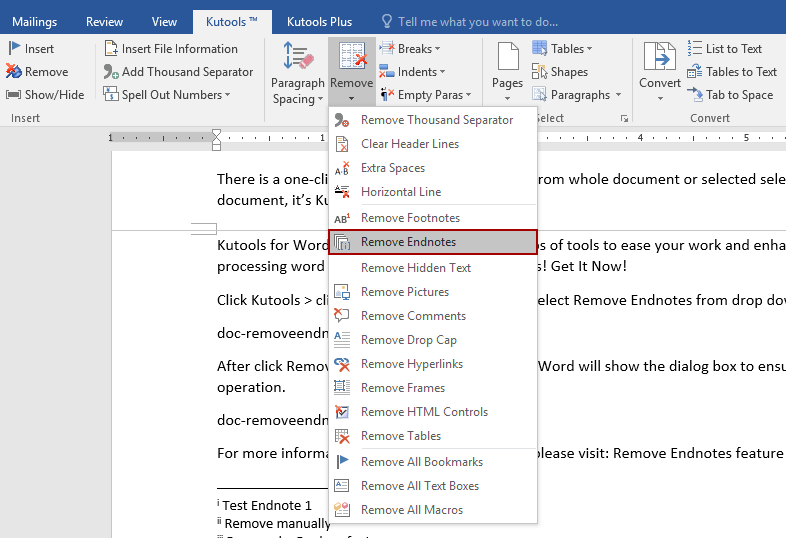

- MICROSOFT WORD ENDNOTE AFTER CHAPTER FOR FREE
- MICROSOFT WORD ENDNOTE AFTER CHAPTER HOW TO
- MICROSOFT WORD ENDNOTE AFTER CHAPTER UPDATE
– do not clutter the main text editing window in Scrivener. This has the advantage that the raw, unformatted, Endnote citations – e.g. It’s also worth noting that you can also copy (and drag-and-drop) Endnote citations into footnotes in Scrivener. Thank you Elaine for this great tip it saved me lots of time. Hopefully this very simple guide will help you to start using Scrivener & EndNote together. There are other tips & tricks which I’m experimenting with, but I’ll save those for another day. You can always select a different style, click update, and then it will change to that style. I’d selected APA 6th as my referencing style, so Word has now created that here.
MICROSOFT WORD ENDNOTE AFTER CHAPTER UPDATE
Now all we need to do is hit the EndNote tab at the top, and select Update Citations and BibliographyĪnd then, the magic happens, and it turns into this: The EndNote link is still there, as it was in Scrivener. Open up that document, and you’ll get something that looks like this: You can then save your lovely piece of writing as .doc. When you’re ready to covert your Scrivener to Word, click on the Compileicon. So, if your quotation comes from p.199 (as mine did) you add after the #number. To add page numbers, you simply put the sign straight after the #number. The # is the number it has been given in my EndNote reference list.

You can see that I’ve been to EndNote, right clicked and copied that reference from the reference list and then pasted it into Scrivener. The description comes from an article by Elizabeth Mackinlay, published in 2015. This is one of my favourite descriptions of the research methodology I use, called autoethnography, written in Scrivener. Right click on the reference you want, copy it, and paste it into your Scrivener. How do you make EndNote citations appear in Scrivener? Have you told Scrivener that you love EndNote too?įind Bibliography/Citations Manager. In fact, go there whatever you’re doing – it’s a fantastic blog! 1. If you’re using a Mac I suggest you go straight to Jon Hickman’s really useful blog post. And doing fun things like getting page numbers to appear on the final Word doc! Sometimes you just want a back to basics, really simple guide – this is what this is.īy the way, I use Windows so my photos reflect that.

But this is my simple guide to getting the two to work together. Here’s my disclaimer: I suspect there’s probably a million other ways of doing it, and they’re probably better than what I’m about to say. With the help of those who commented on my How I Use Scrivener for Academic Writing post, I’ve worked out a strategy that works for me (thank you again for your great comments!).

MICROSOFT WORD ENDNOTE AFTER CHAPTER HOW TO
Happily, the answer to that question is YES! I’ve finally got my head around how to do it. But, can I use EndNote and Scrivener at the same time? And I know how to use Scrivener as my alternative to Word.
MICROSOFT WORD ENDNOTE AFTER CHAPTER FOR FREE
I also love EndNote, the citation software my institution allows me to use for free (yay!). It’s an amazing writing tool which has totally changed the way I write, and how I feel about sitting down to write. Here’s a quick guide to help you out.Īs regular readers will recall, I really love Scrivener. Using Endnote & Scrivener couldn’t be simpler.


 0 kommentar(er)
0 kommentar(er)
